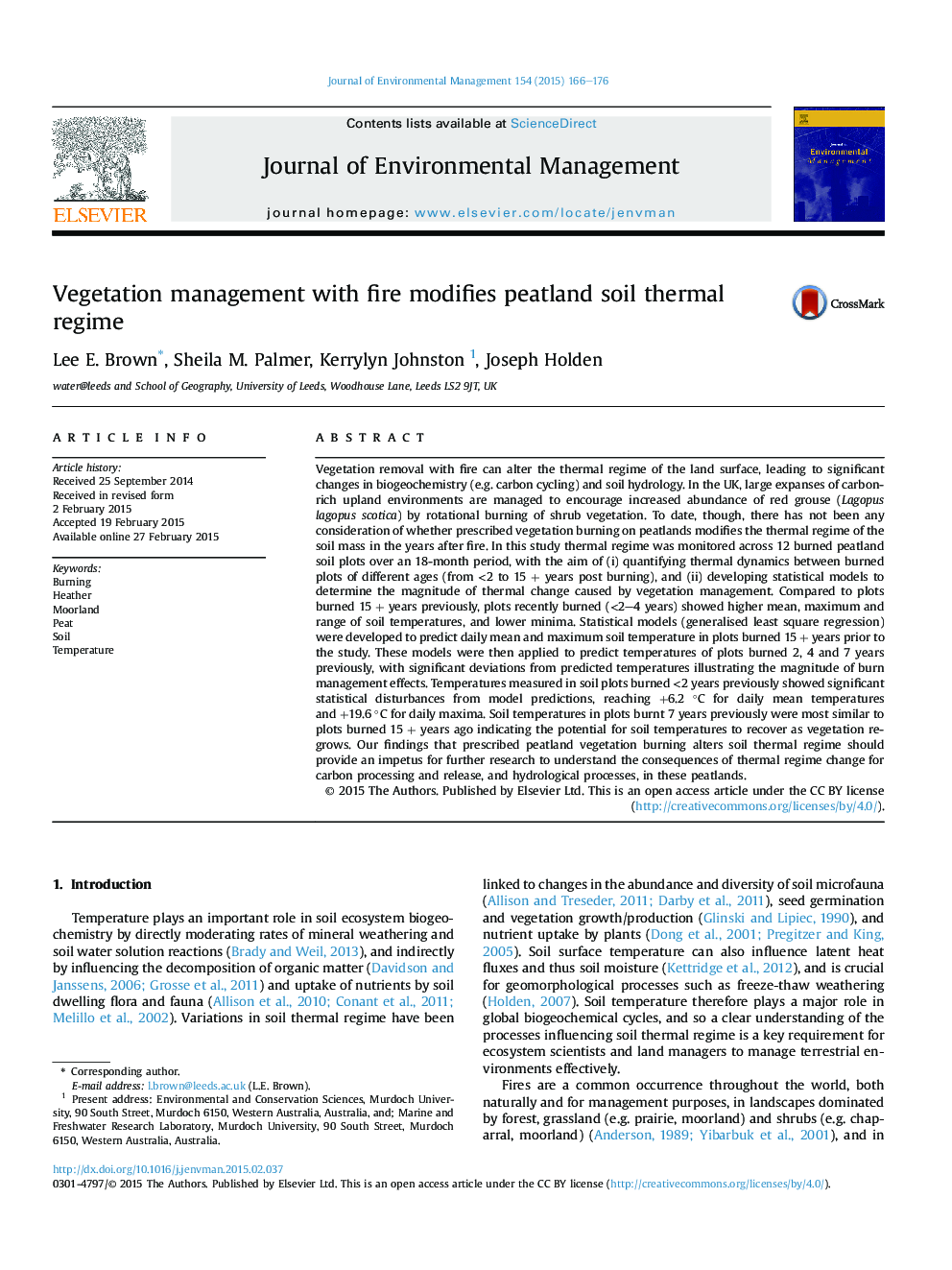| کد مقاله | کد نشریه | سال انتشار | مقاله انگلیسی | نسخه تمام متن |
|---|---|---|---|---|
| 7482412 | 1485258 | 2015 | 11 صفحه PDF | دانلود رایگان |
عنوان انگلیسی مقاله ISI
Vegetation management with fire modifies peatland soil thermal regime
ترجمه فارسی عنوان
مدیریت ریشه گیاه با استفاده از آتش باعث تغییر رژیم حرارتی خاک سرخ مایل به قرمز می شود
دانلود مقاله + سفارش ترجمه
دانلود مقاله ISI انگلیسی
رایگان برای ایرانیان
کلمات کلیدی
سوزش، هدر، مورلند، ذغال سنگ نارس، خاک درجه حرارت،
موضوعات مرتبط
مهندسی و علوم پایه
مهندسی انرژی
انرژی های تجدید پذیر، توسعه پایدار و محیط زیست
چکیده انگلیسی
Vegetation removal with fire can alter the thermal regime of the land surface, leading to significant changes in biogeochemistry (e.g. carbon cycling) and soil hydrology. In the UK, large expanses of carbon-rich upland environments are managed to encourage increased abundance of red grouse (Lagopus lagopus scotica) by rotational burning of shrub vegetation. To date, though, there has not been any consideration of whether prescribed vegetation burning on peatlands modifies the thermal regime of the soil mass in the years after fire. In this study thermal regime was monitored across 12 burned peatland soil plots over an 18-month period, with the aim of (i) quantifying thermal dynamics between burned plots of different ages (from <2 to 15 + years post burning), and (ii) developing statistical models to determine the magnitude of thermal change caused by vegetation management. Compared to plots burned 15 + years previously, plots recently burned (<2-4 years) showed higher mean, maximum and range of soil temperatures, and lower minima. Statistical models (generalised least square regression) were developed to predict daily mean and maximum soil temperature in plots burned 15 + years prior to the study. These models were then applied to predict temperatures of plots burned 2, 4 and 7 years previously, with significant deviations from predicted temperatures illustrating the magnitude of burn management effects. Temperatures measured in soil plots burned <2 years previously showed significant statistical disturbances from model predictions, reaching +6.2 °C for daily mean temperatures and +19.6 °C for daily maxima. Soil temperatures in plots burnt 7 years previously were most similar to plots burned 15 + years ago indicating the potential for soil temperatures to recover as vegetation regrows. Our findings that prescribed peatland vegetation burning alters soil thermal regime should provide an impetus for further research to understand the consequences of thermal regime change for carbon processing and release, and hydrological processes, in these peatlands.
ناشر
Database: Elsevier - ScienceDirect (ساینس دایرکت)
Journal: Journal of Environmental Management - Volume 154, 1 May 2015, Pages 166-176
Journal: Journal of Environmental Management - Volume 154, 1 May 2015, Pages 166-176
نویسندگان
Lee E. Brown, Sheila M. Palmer, Kerrylyn Johnston, Joseph Holden,
